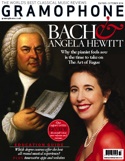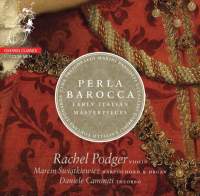Texte paru dans: / Appeared in:
*

GRAMOPHONE (10/2014)
Pour s'abonner /
Subscription information
Channel Classics
CCSSA36014

Code-barres / Barcode : 0723385360148
(ID459)
Consultez toutes les évaluations recensées pour ce cd
~~~~ Reach all the evaluations located for this CD
Reviewer:
Duncan Druce
It would be hard to imagine a more enticing introduction to the delights of 17th-century Italian violin music. The composers represented in this programme were all fascinated by the violin’s technical possibilities but, more than that, were absorbed by the task of creating viable forms for instrumental music. Starting from vocal models, the Cima is like a madrigal in the way each sentence presents a new variant, whereas the later sonatas by Fontana, Castello, Marini and Uccellini take their cue from the highly expressive vocal monody. By the time we reach Isabella Leonarda’s captivating sonata, the succession of ideas has coalesced into a sequence of short, distinct movements.
Rachel Podger and her accompanists enjoy bringing out these pieces’ sense of discovery, of excitement and intense feeling, yet without doing violence to the substance of the music. Touches of rubato, subtle tempo changes and stylish ornamentation promote the necessary feeling of flexibility and freedom, and Podger’s pure tone and expressive bowing are well complemented by Marcin S ´ wia˛tkiewicz’s bright, pungent copy of an Italian harpsichord from the early 1600s and Daniele Caminiti’s imaginative theorbo-playing. The organ provides another welcome contrast of colour, not least in the fine solo Gabrieli ricercar, but occasionally creates a problem of balance; certain notes in the middle register have a strong resonance which tends to obscure the violin’s lower notes.
The programme ends with a
spectacular performance of Bertali’s Chiaconna – ebullient improvisation by the
continuo players providing a perfect backdrop for Podger’s flights of fancy.
Fermer la fenêtre/Close window
Cliquez l'un ou l'autre
bouton pour découvrir bien d'autres critiques de CD
Click either button for many other reviews


